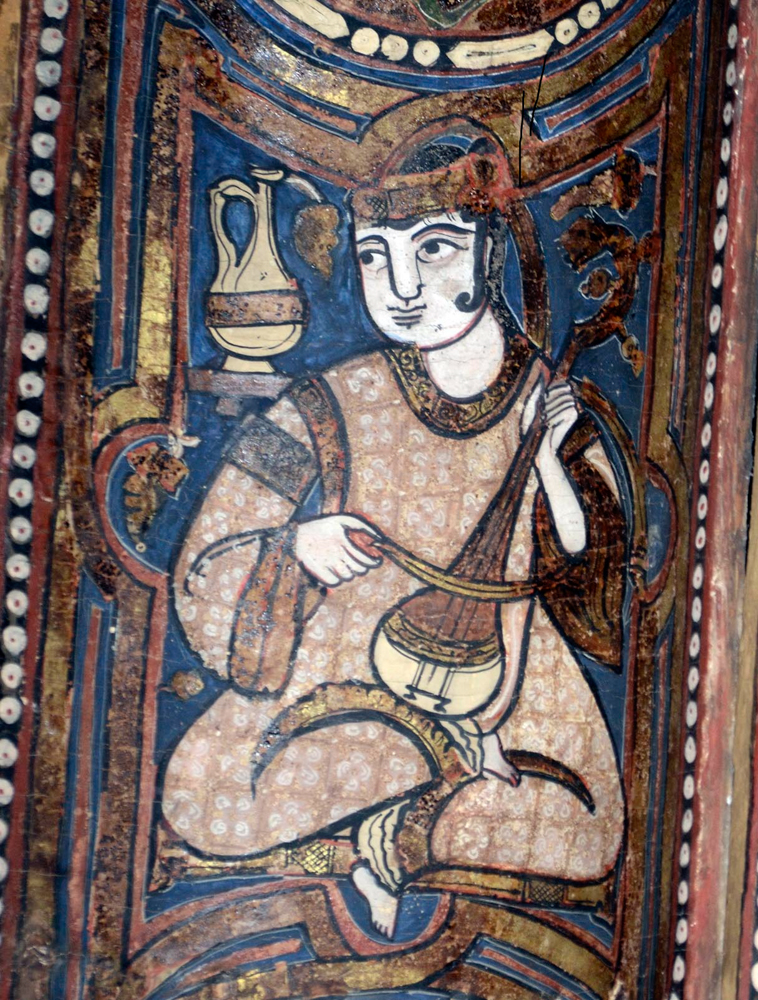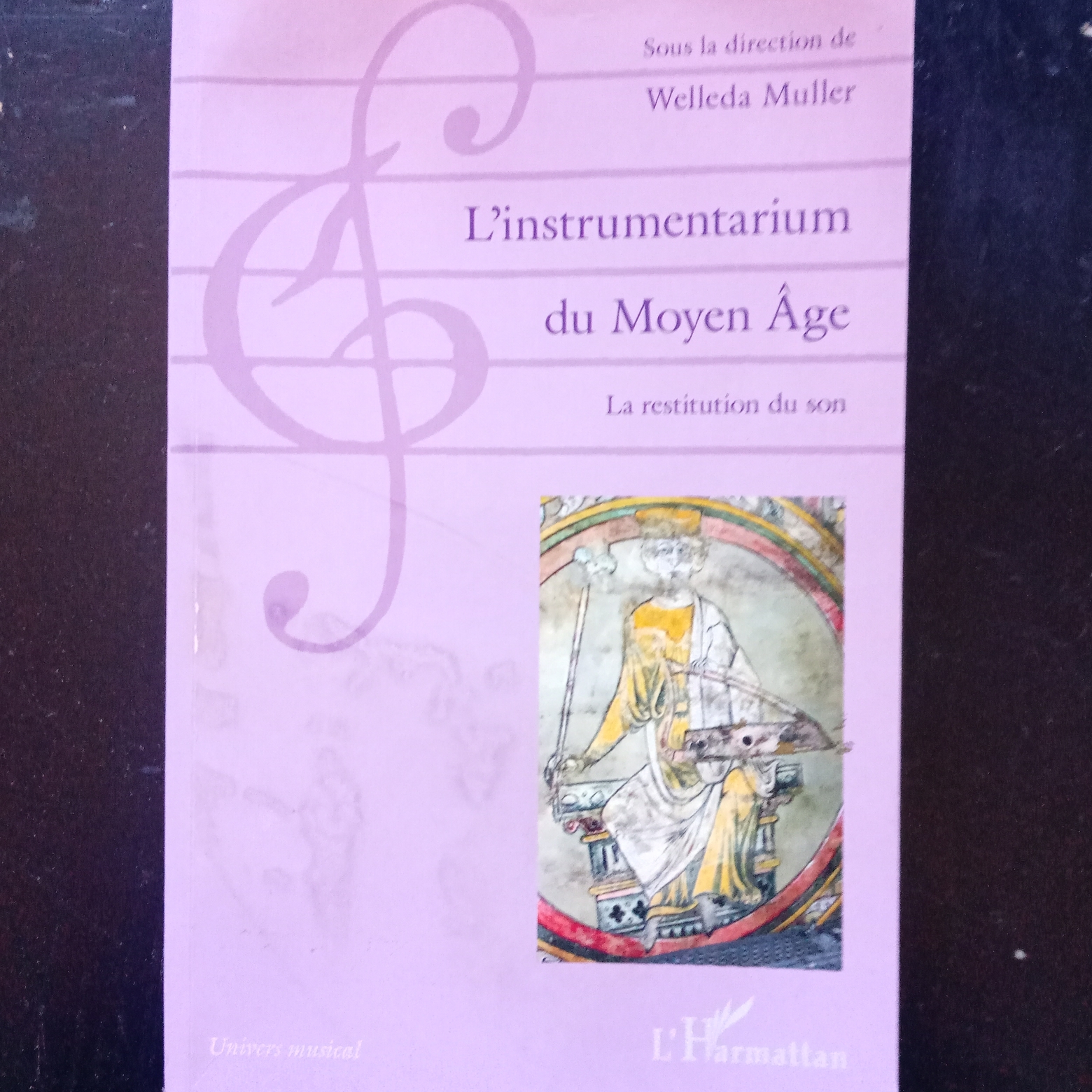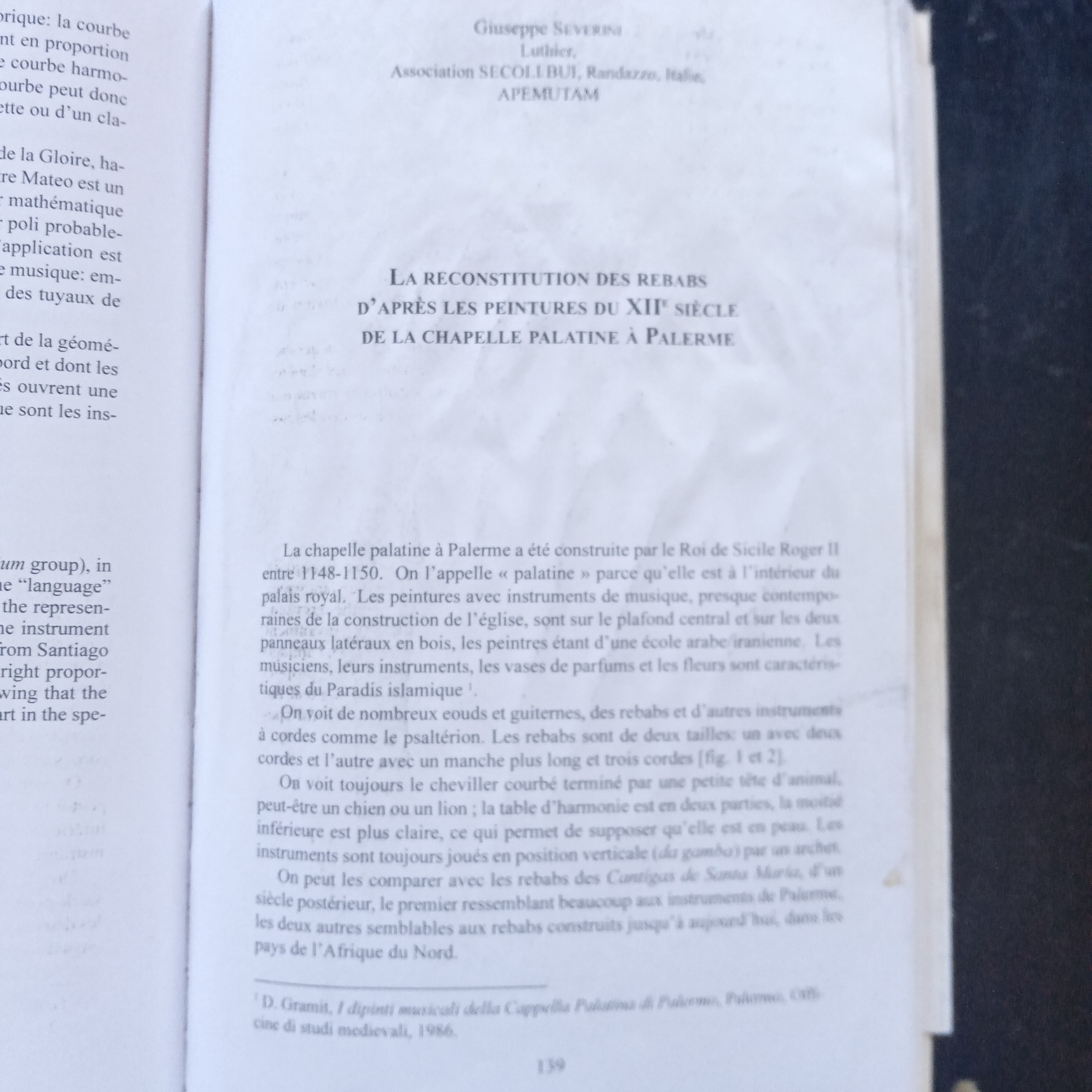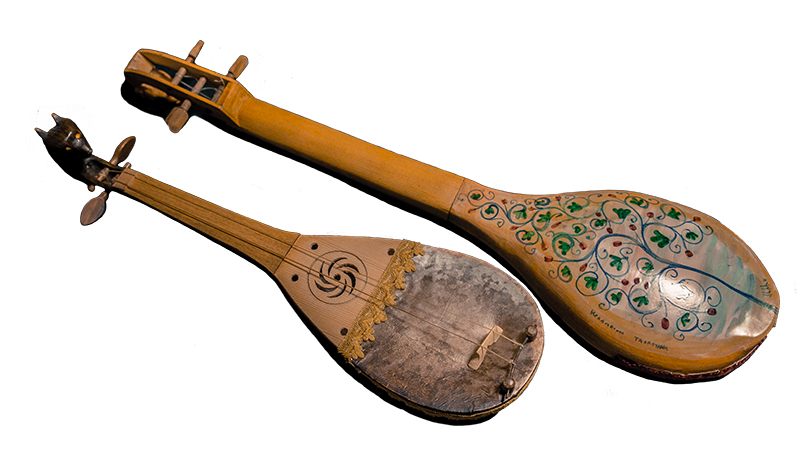CAPPELLA PALATINA PALERMO. Progetto Muqarnas 1. Iconografia musicale
Abbiamo in Sicilia la più strepitosa raccolta di immagini musicali del secolo XII di tutto il Mediterraneo: i dipinti arabo-persiani della Cappella Palatina di Palermo e della cattedrale di Cefalù.
Dal 1997 studio questi repertori iconografici preziosissimi, confrontandoli con tutti quelli provenienti dai paesi mediorientali, dagli stati nordafricani e dalla Spagna.
L'apporto di tanti specialisti e studiosi di questi paesi mi ha portato ad identificare caratteristiche specifiche degli strumenti a corde siciliani di quell'epoca: Oud (Barbat), Rebab, Qitara.
Tali particolarità mi hanno indotto a effettuare adeguate sperimentazioni nella ricostruzione di strumenti musicali che non sono affatto identici a quelli attualmente in uso nei paesi di cultura araba: Oud, Rebab, Guimbri, Loutar.
Il confronto con tali strumenti, con le prassi costruttive ed esecutive di oggi è certamente imprescindibile, come anche la ricerca sui repertori, di cui abbiamo totale carenza, ma ciò non ha reso inutile la ricostruzione e la sperimentazione al fine di riprodurre gli strumenti raffigurati nel modo più fedele e riproducendo le loro peculiari caratteristiche.
E' così che non abbiamo timore di affermare che veramente esistevano l' Oud siciliano, i Rebab e la Qitara siciliani.
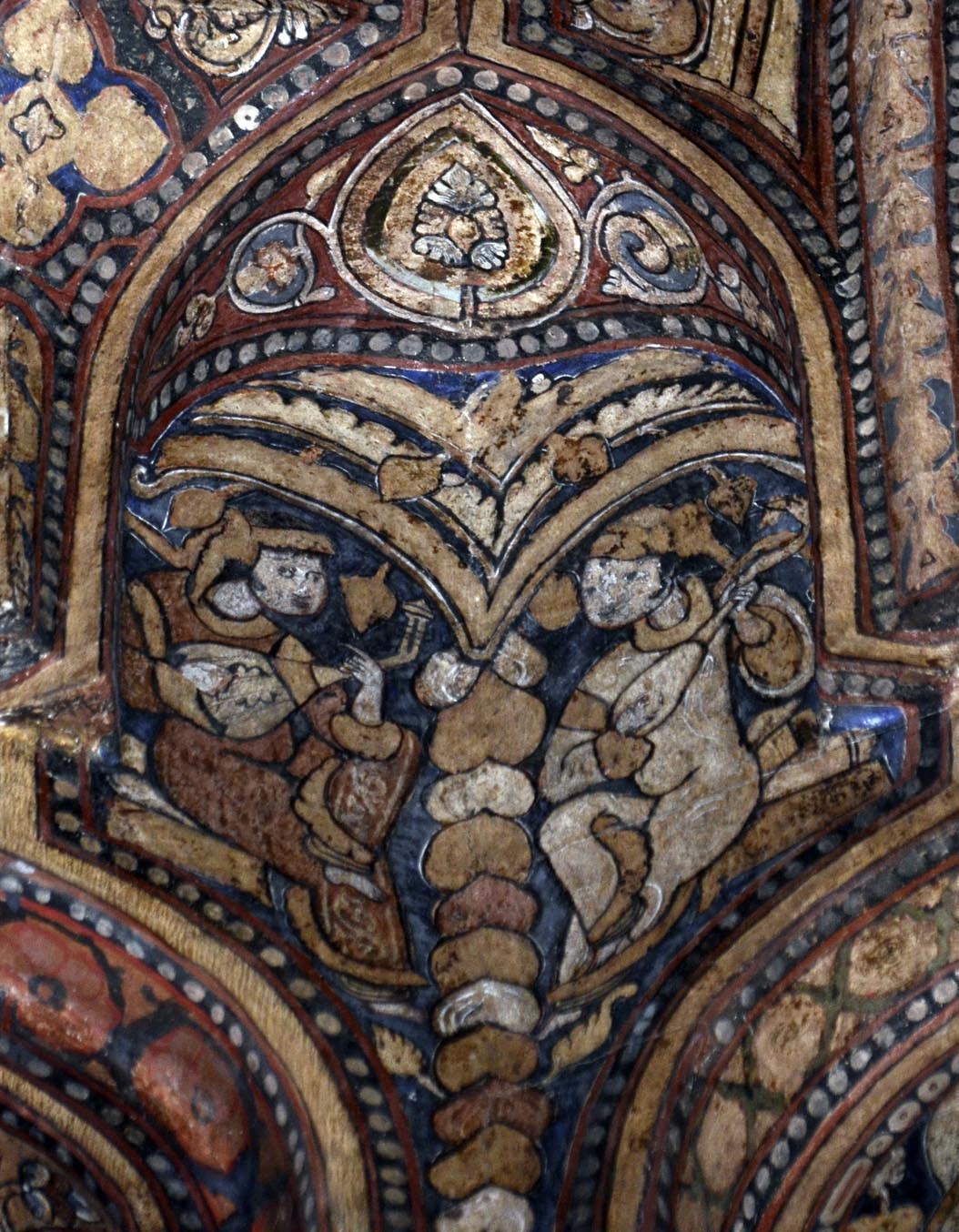
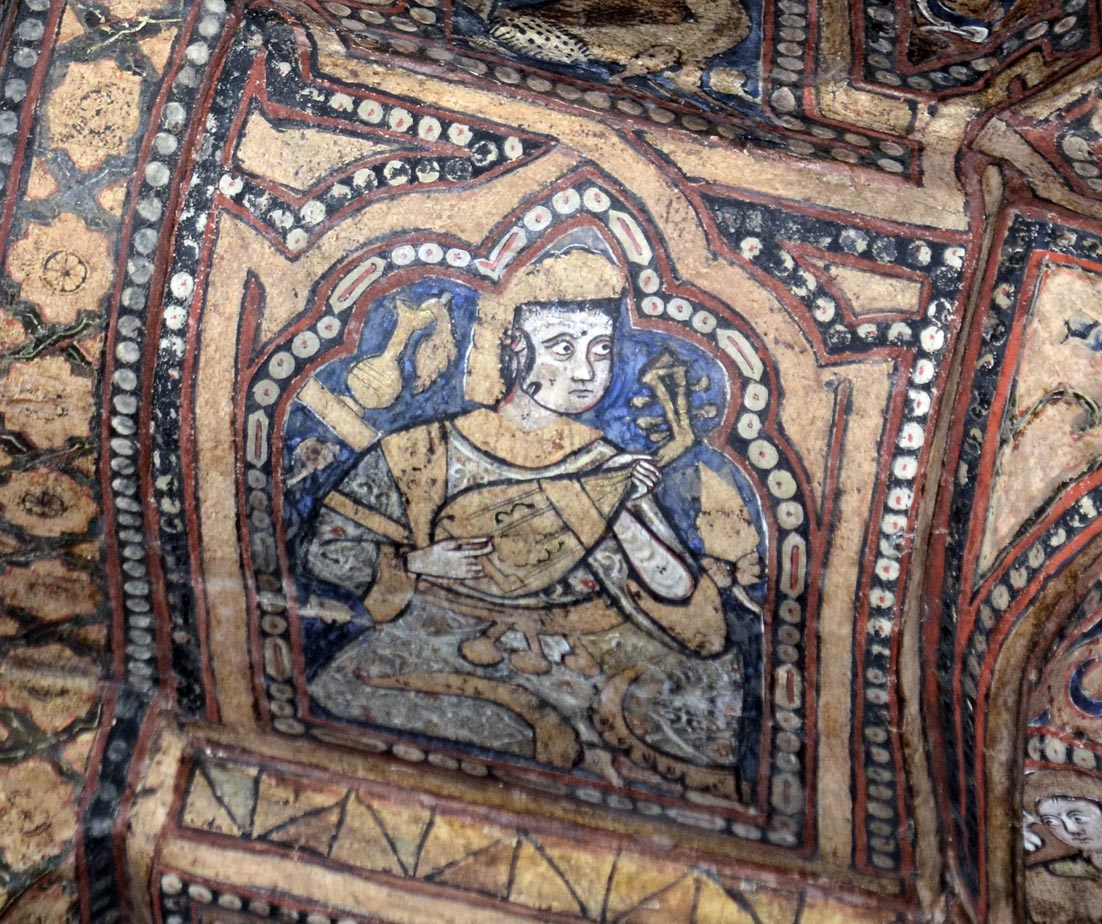
La Cappella Palatina del Palazzo dei Normanni di Palermo fu edificata intorno alla metà del secolo XII per iniziativa del re Ruggero II. Famosa per i mosaici che ne adornano tutte le pareti e la cupola, conserva anche soffitti lignei di gran pregio, finemente dipinti. Il soffitto della navata principale, con struttura alveolare, detta “a muqarnas” è di difficile fruizione, trovandosi a 15 metri di altezza in area poco illuminata. Le decorazioni pittoriche dei due soffitti a trabeazione delle navate laterali sono invece molto più visibili.
Le pitture sono opera di maestranze di scuola “Arabo-persiana”, il cui stile inconfondibile si dispiega su tutte le superfici possibili dimostrando una chiara tendenza all’ “horror vacui”.
Con colori accesi e senza risparmio di motivi decorativi vengono raffigurati personaggi per lo più recanti strumenti musicali, identificabili secondo alcuni con le “Uri” del paradiso islamico, secondo altri con personaggi della Corte. Nei contorni delle stelle ottagonali che costituiscono gli scomparti principali della complessa struttura alveolare vi sono dipinti versetti del Corano in caratteri cufici, che da lontano si prendono per ghirlande e decorazioni.
I pittori, provenienti dal medio-oriente o siciliani, non sappiamo, ritrarrebbero il Paradiso islamico, identificabile però anche con la vita e le delizie della Corte reale. Le Uri suonano i loro strumenti in magnifici giardini adorni di palme, di tralci di vite con grappoli d’uva e pampini, circondate da vasetti che presumibilmente contengono meravigliosi profumi o liquori. Analoghe a quelle di Palermo sono le pitture che adornano le travi del soffitto della Cattedrale di Cefalù in cui sono ritratti gli stessi soggetti dipinti col medesimo stile. Purtroppo si tratta di pochi frammenti dell’opera originale, situati oggi in un luogo quasi inaccessibile. Dedicò ad essi qualche pagina il prof. Carlo Emilio Carapezza di Palermo sulla rivista Nuove Effemeridi, una trentina di anni fa e una delle immagini da lui pubblicate , quella di una suonatrice di Qitara, diede impulso a un lavoro di ricostruzione dello strumento che mi fu affidato nel 1997. L’esito del lavoro fu spettacolare, con un concerto di musiche del mediterraneo svolto nella Cattedrale di Cefalù, per iniziativa di Italo Gomez.
Solo successivamente rivolsi la mia attenzione ai dipinti della Palatina, studiando soprattutto i Rebab (cordofoni ad arco) in vista della loro ricostruzione, che negli anni ho effettuato producendo molteplici esemplari in due taglie diverse: piccoli a due corde e più grandi a tre, ma soprattutto sperimentando la costruzione della cassa di risonanza in ceramica, oltre che in legno.
La fortuna di avere incontrato una troupe di archeologi-registi mi permise di avere delle belle immagini dei soggetti musicali della Cappella, altrimenti irreperibili.
Passeggiando sotto le due navate laterali si possono scorgere una serie di musici che suonano degli Oud (liuti arabi). Sono in vesti di colore bruno-rossiccio con fasce dorate, ritratti a mezzo busto e provvisti di aureole. Questi personaggi sembrano piuttosto “cristianizzati”, rispondono cioè, essendo forse più in vista, a delle convenzioni iconografiche familiari all’arte cristiana, pur restando, nel colore e nella tipologia degli strumenti, uniformi al contesto generale delle pitture. Fa eccezione una splendida suonatrice di Rebab che, in ampie vesti bianche, sedendo a gambe incrociate, priva di aureola, suona con aria estatica il suo slanciato strumento ad arco a tre corde.
Passando a considerare le figure del soffitto centrale, solo disponendo di strumenti di ingrandimento, possiamo individuare numerose suonatrici, di Oud, di Qitara (liuti piccoli), di Rebab a due e a tre corde, e di Salterio (uno solo), più qualche rara raffigurazione di suonatrici di flauto e di percussioni. Qui la postura, gli abiti, gli sfondi, rispecchiano in pieno un’ambientazione e uno stile medio-orientali, senza concessioni.
Il Liuti (Oud) sono gli strumenti più raffigurati: hanno tutti la medesima struttura, con cassa ovale o piriforme e 5 corde doppie suonate con sottili plettri, cavigliere riverso all’indietro, decorazioni geometriche.
Seguono le Qitare, versione più piccola, sottile e slanciata del Liuto, con tre corde doppie, suonate a plettro e cavigliere ricurvo adorno di una testa scolpita, di solito ritraente un cane (Cirneco?). La ricostruzione di questo tipo di strumento, con tavola armonica in pelle di capra (la stessa che si usa per i tamburelli siciliani), corpo monoxilo e corde in budello, ha dato risultati sorprendenti: ci si poteva aspettare un suono secco, come nel Banjo, invece il timbro è risultato dolcissimo, senza mancare del giusto volume.
I Rebab a due o tre corde sono da annoverare tra i primi strumenti ad arco raffigurati in Europa. Le tavole armoniche in due colori suggeriscono una fattura in due materiali: legno e pelle. La forma e il colore degli strumenti, che richiamano da vicino i vasetti alle spalle delle suonatrici, fanno pensare alla possibilità che le casse armoniche, ancorché di legno scavato, potessero essere realizzate in ceramica. La ricostruzione di questi strumenti ha rivelato che quelli fatti in ceramica forniscono un suono potente con attacchi immediati, mentre quelli in legno hanno una sonorità più delicata.
Il Salterio di forma quadrata costituisce un “unicum” tra gli strumenti della Cappella e mostra con chiarezza dei piccoli ponticelli, molto probabilmente mobili, che possono indicare una interessante soluzione per variare a piacimento le possibilità di esecuzione di diverse scale o “maqam”. Di questo strumento ho in progetto una ricostruzione, basata anche sul confronto con i salteri di forma analoga in uso presso i monasteri occidentali e di cui abbiamo numerose raffigurazioni e descrizioni. Non dimentichiamo che le origini di questo strumento sono da ricercare nel mondo medio-orientale in epoca precedente la nascita di Cristo e che successivamente esso entrò a far parte delle tradizioni dei popoli del Mediterraneo diffuse poi nel Continente attraverso la cultura cristiana.
Per quantità e qualità queste raffigurazioni di strumenti musicali rappresentano una delle più interessanti e generose fonti di informazione organologica per l’Europa del XII secolo, eppure sono ancora poco note anche fra gli addetti ai lavori. Basti pensare che fino ad oggi è stata dedicata loro solo una piccola pubblicazione italiana e un breve articolo in una raccolta francese (1).
Non resta per ora che recarsi “in loco” armati di un buon binocolo per godere lo spettacolo di questa grande enciclopedia degli strumenti musicali della Sicilia dei tempi d’oro.
(1) David Gramit, I dipinti musicali della Cappella Palatina di Palermo, Palermo, Officina di studi medievali, 1986.
Giuseppe Severini, La reconstitution des rebabs d’après les peintures du XII siècle de la Chapelle palatine à Palerme, in: L’instrumentarium du Moyen Age : la restitution du son. Paris, l’Harmattan, 2015.
